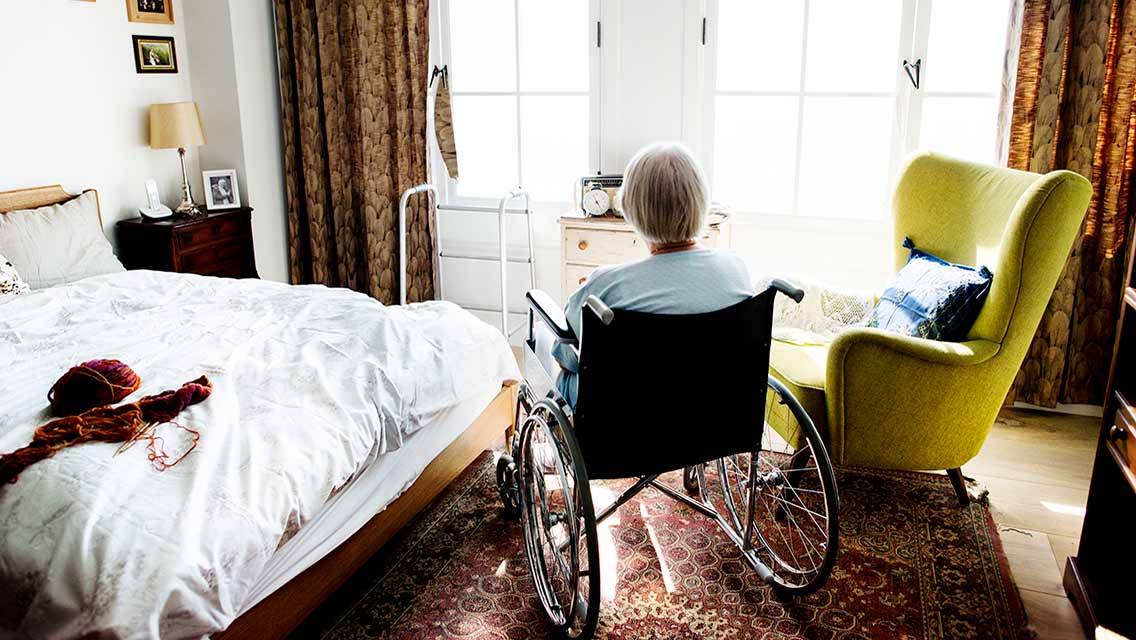I tend to think of long-term care facilities as places housing docile, harmless victims of the aging process. Few of us aspire to spend our final days in these residences, but our aversion typically focuses on concerns about the quality and expense of care rather than on the odds that our “harmless” neighbor down the hall might beat us up.
Only in psychiatric hospitals and residential youth facilities will you find more frequent instances of violence than in nursing homes and assisted-living residences, according to research by Cornell University gerontologist Karl Pillemer, PhD. In a seminal 2016 survey of 10 nursing homes in urban and rural New York, he found that about one in five residents reported suffering some level of aggression from another resident in the course of a month. And in a follow-up study published earlier this year in JAMA Network Open, his research team revealed a similar rate of violent incidents among residents of 14 assisted-living facilities.
“We have this extraordinary paradox: The institutions, nursing homes and assisted livings who care for the most vulnerable members of our society are some of the most violent in our society,” Pillemer tells The New York Times. “It’s ubiquitous. No matter the quality of the home, there are similar rates.”
“We have this extraordinary paradox: The institutions, nursing homes and assisted livings who care for the most vulnerable members of our society are some of the most violent in our society,”
The majority of these aggressive acts were verbal — insults, threats, accusations, as well as unwanted sexual remarks — but about a third of the incidents involved physical assaults, mostly committed by younger, more ambulatory residents. Some of the victims reported multiple types of aggression, which Pillemer notes, “would be considered abuse if it happened in your own home.”
Perhaps unsurprisingly, these incidents were most frequently observed in memory-care units, where residents were more likely to display both a lack of inhibition and a tendency toward violent outbursts. And, as Jordan Rau reports in KFF Health News, many of these for-profit facilities are chronically understaffed and fail to adequately evaluate the temperaments of incoming residents. Rau tells the story of an altercation at a memory-care facility in Billings, Mont., that illustrates how difficult it can be to prevent violent interactions between dementia patients in these units.
When Jeffrey Dowd arrived at Canyon Creek Memory Care Community, managers there circulated a memo to employees warning them that the 6-foot, 250-pound former auto mechanic could be “physically/verbally abusive when frustrated.” Dowd, 66, had recently been released from a hospital after being diagnosed as suicidal, confused, and agitated.
Dan Shively, a diminutive 73-year-old former bank president, had been living at Canyon Creek for just four days when he approached the dining-room table where Dowd was sitting. When Dowd told him to stay away, Shively retreated. Dowd then stood and shoved him to the floor. Shively fractured his skull, his brain hemorrhaged, and he died five days later.
No charges were filed against Dowd in the case, and for the better part of the next three years he continued to present a physical threat to his neighbors, striking some of the men and groping some of the women. One staff member admitted that she was “literally scared to death of Jeff.”
Shively’s family filed a lawsuit against Canyon Creek’s owners, the privately held Koelsch Communities, citing a state law prohibiting facilities from admitting people who are “a danger to self and others.” The family’s attorney argued that Dowd’s intake assessment in October 2018 clearly described him as physically and verbally aggressive.
But attorneys for Canyon Creek countered that Dowd hadn’t been involved in any physical assaults in the weeks prior to Shively’s December arrival and called the law too broad to be enforced as a matter of negligence. People with serious dementia often act in unpredictable ways, they noted, and Shively’s death “was not reasonably foreseeable.”
And yet these incidents seem to occur with some frequency, according to research by Eilon Caspi, PhD. In a 2023 study published in the Journal of Applied Gerontology, the University of Connecticut gerontologist found that nearly half (44 percent) of the 105 fatal falls among dementia patients he analyzed involved the type of altercation that led to Shively’s death. “Some people are aggressive, and some are violent,” he tells Rau. “But if you look closely, the vast majority are doing their best while living with a serious brain disease.”
Resident advocates, such as Richard Mollot of the Long Term Care Community Coalition, point to the bottom-line priorities of many facility owners, who cut corners on staffing and training to protect their investments, as a major factor in this trend. Indeed, Shively’s lawyer argued that financial incentives — Canyon Creek’s executive director was awarded a bonus each month in which 90 percent of the facility’s beds were filled — affected the decision to admit Dowd despite his violent behavior. (The judge refused to allow him to present this as evidence.)
And Teepa Snow, an occupational therapist whose organization trains dementia caregivers, argues that the structure of the facilities themselves — double rooms, crowded dining rooms and other common areas, and a lack of outdoor access — can make conflicts more likely. The pandemic and its aftermath, Snow says, have only made the situation more explosive. “It’s as bad as I’ve ever seen it.”
Solutions are available, Pillemer and others note. Reconfiguring these facilities to eliminate narrow corridors would make monitoring residents more effective, and providing more private rooms and larger common areas would minimize situations that sometimes fuel conflict. But, most importantly, staff need to be better trained to prevent the sort of incidents that cost Shively his life.
Pillemer and his associates at Cornell have developed an online and in-person training program for staff and administrators at long-term care facilities that was shown in a small study to reduce the number of falls and injuries. “We help people understand why this happens, the specific risk factors,” program coordinator Leanne Rorick tells The Times. “They tell us the training helps them stop and do something about it. Things can escalate quickly when they’re ignored.”
Of course, you still need to have sufficient staff. And though Medicare has mandated that nursing homes increase their staffing or face financial penalties, providers have already lined up to battle the move in court. And such a mandate would not affect assisted-living residences, which are regulated by the state in which they reside.
For Dan Shively’s survivors, it’s just another example of a failed system. When their negligence suit finally came before a jury in 2022, they won a $310,000 verdict — which Spencer Shively called a victory for Canyon Creek. “I don’t know it really changed anything,” he tells Rau. “For me, I got some closure. I feel like these facilities are just continuing to do the same things they’re going to do because there hasn’t been systemic change.”





This Post Has 0 Comments